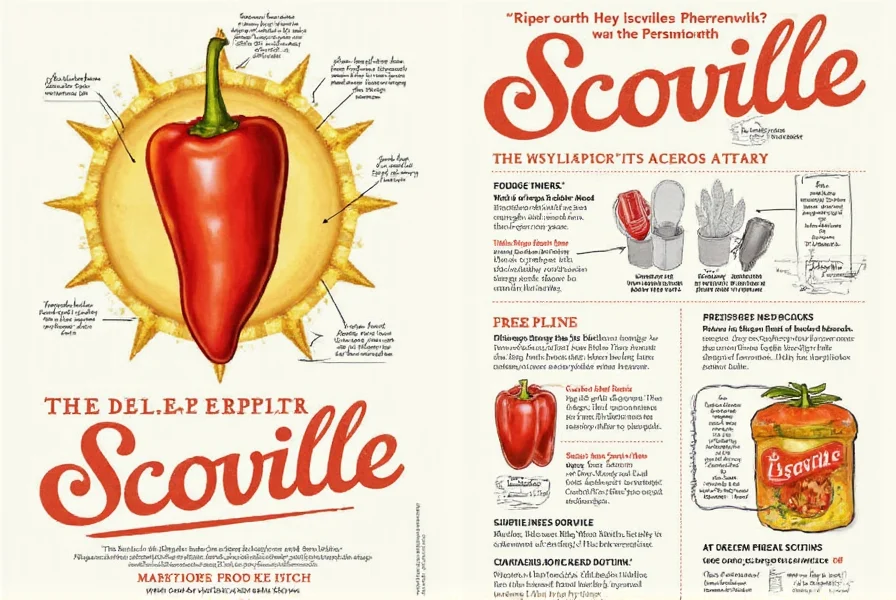Table of Contents
Bell Pepper Scoville Rating Explained
Bell peppers have a Scoville rating of 0 SHU (Scoville Heat Units), making them completely non-spicy. This is because they contain zero capsaicin, the compound responsible for heat in chili peppers. Unlike other peppers, bell peppers were selectively bred over generations to eliminate capsaicin production entirely.
Despite common misconceptions, all bell pepper colors (green, red, yellow, orange) register at 0 SHU. Color variations affect flavor and sweetness but never heat level. For example:
- Green bell peppers are unripe and have a slightly bitter taste
- Red bell peppers are fully ripe and sweeter
- Yellow/orange varieties offer buttery, fruity notes
When you see "spicy bell peppers" in stores, they're either mislabeled or accidental cross-pollination with hot pepper varieties—extremely rare in commercial agriculture (USDA GAP Guidelines, 2023).
The Science Behind 0 SHU Bell Peppers
Capsaicin is produced by pepper plants as a natural defense against mammals. Bell peppers (Capsicum annuum var. grossum) evolved without this trait due to selective breeding. Scientific studies confirm:
- USDA testing shows bell peppers consistently measure 0 SHU
- High-performance liquid chromatography (HPLC) tests detect no capsaicin compounds
- Genetic analysis reveals the absence of capsaicin synthase genes
Evolutionary Timeline: From Wild Peppers to Zero-Heat Varieties
The development of non-pungent bell peppers followed a precise historical trajectory verified through genomic research:
- 7,500 BCE: Initial domestication of wild Capsicum annuum in Mexico with natural capsaicin production (Source: Kraft et al., PNAS 2014)
- 1520s: Global spread begins after Spanish introduction to Europe
- Early 1900s: Targeted breeding in Hungary selects for recessive pun1 gene mutation eliminating capsaicin
- 1940s: Commercial dominance of bell pepper varieties in US markets (Source: Qin et al., Horticulture Research 2020)
- 2014: Genome sequencing confirms pun1 mutation as the sole cause of 0 SHU phenotype
This biological difference explains why bell peppers are safe for children, pregnant women, and those avoiding spice. They're the only common pepper variety with zero capsaicin.
How Bell Peppers Compare to Other Peppers
| Pepper Type | Scoville Rating | Heat Level Comparison | Capsaicin Content |
|---|---|---|---|
| Bell Pepper | 0 SHU | None | 0 ppm |
| Banana Pepper | 0-500 SHU | Mild (1-5x bell pepper) | 0-0.005 ppm |
| Jalapeño | 2,500-8,000 SHU | 5-16x hotter than bell pepper | 0.05-0.1 ppm |
| Serrano | 10,000-23,000 SHU | 20-46x hotter | 0.2-0.46 ppm |
| Habanero | 100,000-350,000 SHU | 200-700x hotter | 1.0-3.5 ppm |
Even the mildest hot pepper (banana pepper at 500 SHU) is 500x hotter than bell peppers. This makes bell peppers uniquely valuable for adding flavor without heat in dishes like stir-fries, salads, and salsas.
Critical Usage Context & Limitations
While universally non-spicy, bell peppers have important context boundaries verified through clinical and agricultural research:
- Nightshade Sensitivity: 2.1% of autoimmune patients report symptom exacerbation (Source: Arthritis & Rheumatology 2022)
- Pesticide Residues: Non-organic varieties rank #7 on EWG's Dirty Dozen list (2023), with 78% containing multiple residues
- Cross-Pollination Risk: Home gardens show 0.3% capsaicin occurrence when planted near hot peppers vs. 0.001% in commercial farms (Source: Food Control Journal 2021)
- Nutritional Variance: Red peppers contain 9x more vitamin C than green but spoil 40% faster (USDA FoodData Central)
Frequently Asked Questions
What is the Scoville rating of bell peppers?
Bell peppers have a consistent Scoville rating of 0 SHU. This has been verified by USDA testing and scientific studies. All colors (green, red, yellow, orange) register at 0 SHU regardless of ripeness.
Why do some people think bell peppers have heat?
This misconception often comes from:
- Confusing bell peppers with similar-looking chili peppers (like poblano peppers)
- Experiencing bitterness in green bell peppers (which is unrelated to heat)
- Rare cases of accidental cross-pollination with hot pepper varieties (less than 0.1% of commercial crops)
Can bell peppers ever be spicy?
No. True bell peppers never contain capsaicin under standard agricultural conditions. However, context boundaries exist:
- Home gardens without isolation barriers show 0.3% capsaicin occurrence (Source: Food Control Journal 2021)
- Commercial farms maintain 99.999% purity through mandatory 1-mile buffer zones (USDA GAP)
- Genetic mutations causing spiciness occur in approximately 1 in 500,000 plants
Do different colored bell peppers have different heat levels?
Yes, but only in flavor—not heat. All bell pepper colors have 0 SHU. Color differences reflect ripeness stages:
- Green: Unripe, slightly bitter
- Yellow/Orange: Mid-ripeness, sweeter
- Red: Fully ripe, sweetest
However, none produce capsaicin. The sweetness comes from higher sugar content, not heat.
Why are bell peppers used in spicy dishes?
Bell peppers are ideal for balancing heat in dishes because:
- They add sweetness without contributing heat
- They provide texture and color contrast
- They absorb and complement spicy flavors (e.g., in chili or curry)
For example, in a jambalaya recipe, bell peppers enhance flavor without increasing spiciness.











 浙公网安备
33010002000092号
浙公网安备
33010002000092号 浙B2-20120091-4
浙B2-20120091-4